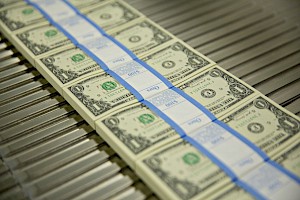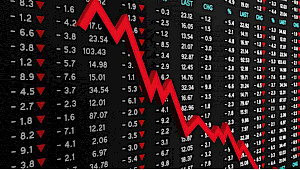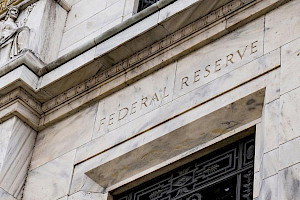Fiscal Armageddon looms and no one in power wants to talk about it. Here’s why you should be afraid
June 04, 2024Originally published in The Toronto Star on May 28, 2024 as contributing columnist
For the better part of two decades, a small group of us fiscally prudent types have been relegated to the wilderness for having the temerity to sound the alarm.
Our warnings were bordering on heresy to many on Wall Street and in DC. But lately, more and more voices are joining the chorus that we are heading headlong toward a fiscal and monetary cliff.
When the day of reckoning arrives, most people will be unprepared. That is a fact that has been proven throughout history. Just as fortune favours the prepared, financial ruin will befall the unprepared.
Before you roll your eyes, consider the facts.
Spiralling debt is out of control, especially in the public sector. The debt problem is not only a U.S. problem — most Western economies are experiencing a similar malaise — but given its broken political system, it’s certainly the scariest. With $2 trillion in annual deficits and $100 trillion of baseline deficits projected to 2050, it is clear that the U.S. is on an unsustainable trajectory.
Central banks are playing a game of Whac-A-Mole
High debt and the printing of money needed to keep the system from imploding have created more frequent crises with shorter intervals between them. There was the 2008 financial crisis, then the 2019 repo crisis, followed by the 2022 U.K. gilt crisis, and last year’s implosion of Credit Suisse and the U.S. regional bank crisis. Debt levels will guarantee that things will continue to break. The Federal Reserve and other central banks are playing a game of Whac-A-Mole trying to stay on top of every new crisis.
The American political class isn’t even discussing the debt issue, never mind trying to fix it. Fiscal Armageddon is the elephant in the room that no one dares acknowledge — and with good reason. Seventy six per cent of the U.S. annual budget is made up of nondiscretionary spending and interest costs on the ballooning debt. There is very little room to manoeuvre when it comes to budget cuts and both parties have their sacred cows. Put simply, cuts are deemed political suicide.
Likewise for raising taxes on the middle class and God forbid anyone suggests that big corporations should pay their fair share. The truth is, deficit spending is a bipartisan sport. The only difference is where the profligacy takes place.
The Fed is also part of the problem. Fed chairs suffer from perceptual blindness; always assuring us the system works and underplaying all and any risks on the horizon. Just prior to 2008, we were assured the housing market was fine, that is until the proverbial black swan’s feathers started flying.
Incomes remain flat and the cost of living is skyrocketing
Then in 2009 we were promised that the Fed’s bloated balance sheet from all the Quantitative Easing (QE) would be reduced in short order. Yet 15 years later it still sits at $7.5 trillion. And I predict they will have no choice but to return to QE soon as a buyer of last resort for U.S. debt issuance.
In 2021 we were assured that inflation was transitory. It wasn’t. Recently, Fed Chair Jerome Powell told us he sees “no stag” and “no flation” when asked about stagflation. He couldn’t be more wrong. Incomes remain flat and the cost of living is going through the roof. And don’t bother looking at official CPI data. Its bogus. Real inflation is much higher.
We must finally accept that The Fed will always do the right thing — for Wall Street.
It’s the thankless job of every secretary of the treasury to assure the public that everything is fine. Last November Secretary Janet Yellen said the U.S. economy is strong and the treasury market is both safe and liquid and that Moody’s downgrade of U.S. treasuries “is a decision that I disagree with.” That’s it, she just simply “disagrees.” It’s like the captain of the Titanic acknowledging that they were scraping alongside the iceberg but that the ship is intact — barring a few minor tears in the hull.
Meanwhile, the rest of the world is taking notice. De-dollarization is in full swing, with China leading the charge, dumping U.S. treasuries at an alarming rate. Much of the world following suit. The reasons are many, including the fear of U.S. sanctions following the freezing of Russian U.S. dollar reserves, but America’s deteriorating fiscal situation is also near top of the list. If the yen continues to plummet, Japan may have no choice but to start unloading its U.S. Treasury holdings.
Superdebt cycles happen about every 70 years
Japan currently holds the world’s largest amount of U.S. Treasuries and such a move would be aimed at defending the yen. The U.S. has long relied on Japan to buy large quantities of their debt and if that buying were to turn into selling, there would be almost no foreign buyers of U.S. Treasuries left. As I have been saying for years, when foreign governments stop buying U.S. debt, the Fed will have no choice but to become the buyer of last resort and that will usher in a vicious cycle of money printing which would in turn usher in a U.S. dollar crisis and hyperinflation.
Most people won’t accept it, but a crisis is coming. Superdebt cycles happen approximately every 70 years, which coincides with the average human lifespan. This alignment is no mere chance. Our generation has never directly experienced the hardships faced by our parents’ generation. While we hear their stories, we haven’t lived through those events, which can lead to a lack of urgency.
History reveals recognizable patterns. Throughout the rise and fall of major powers, similar strategies have been employed during their twilight years. The U.S. is no exception. Eventually, the inexorable forces of mathematics and gravity will assert themselves. We cannot defy these fundamental laws indefinitely. But while the larger system may be beyond salvation, there might still be time to safeguard yourself.










